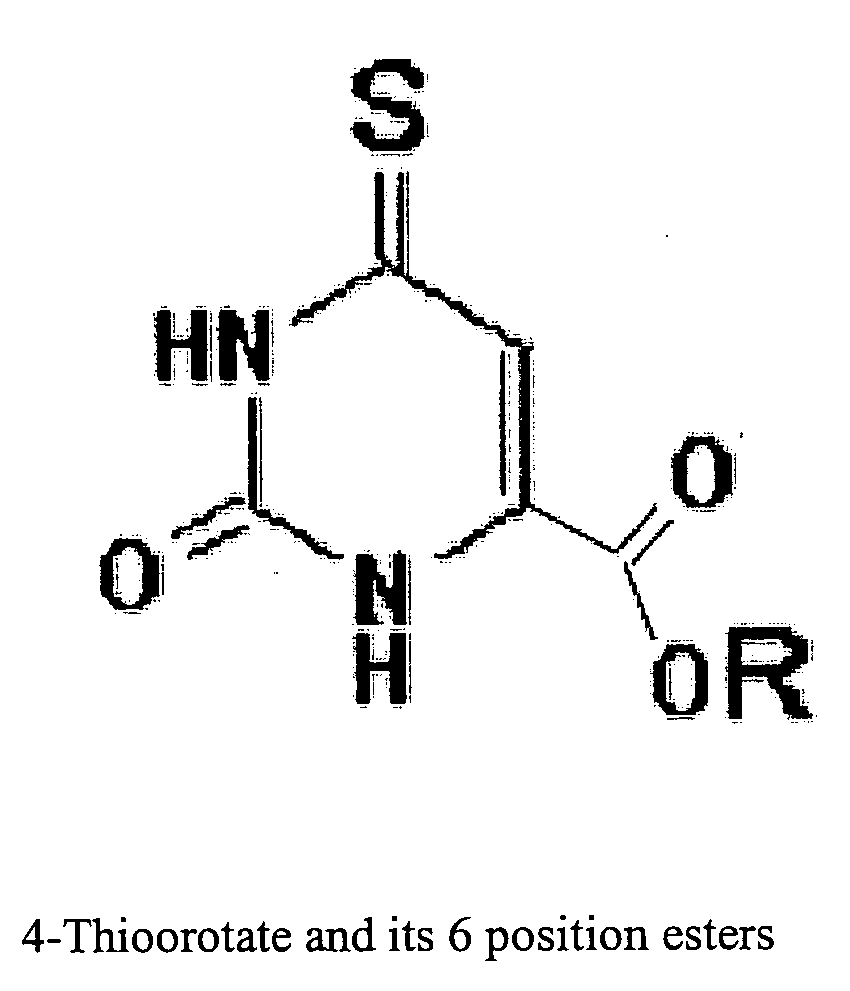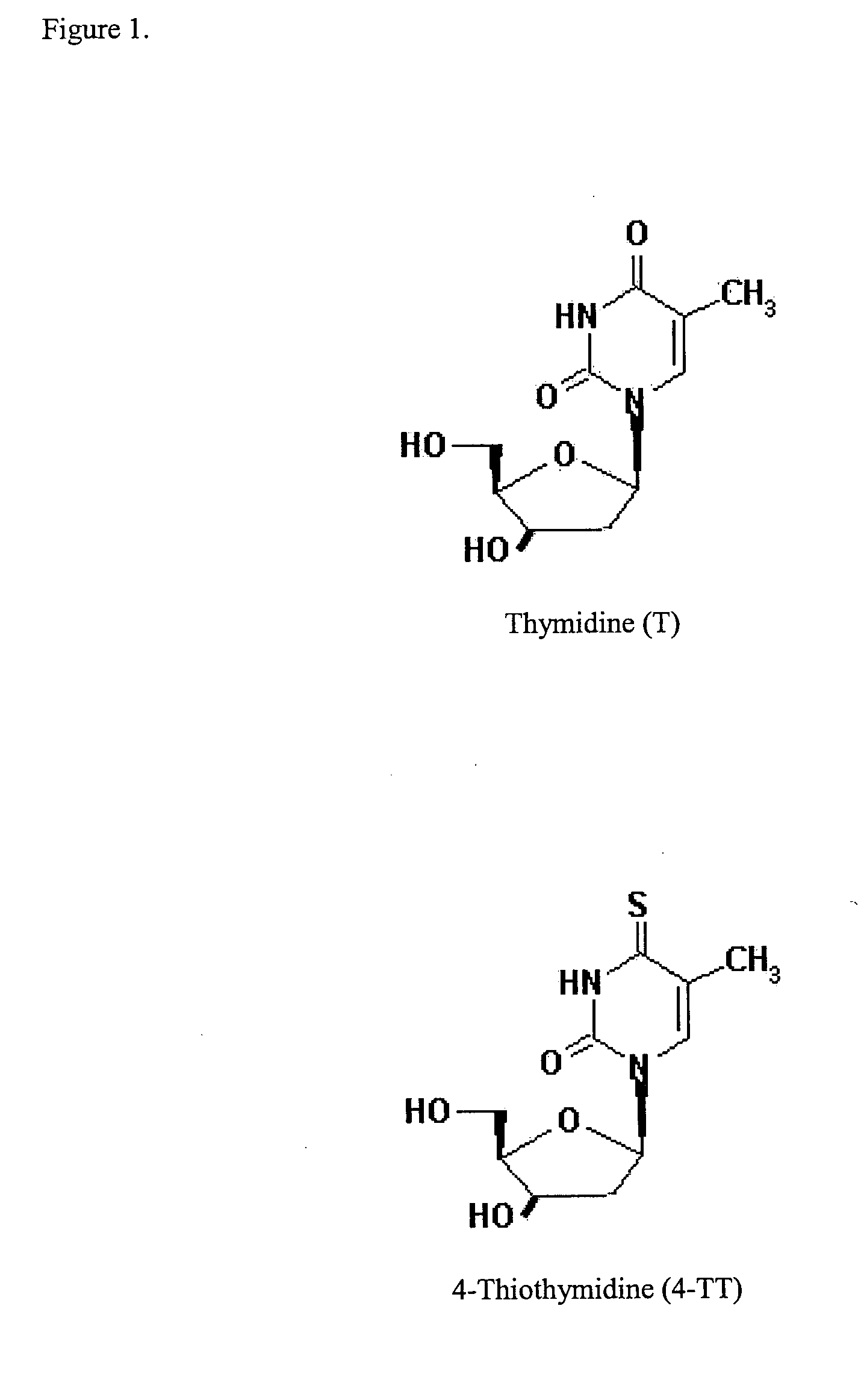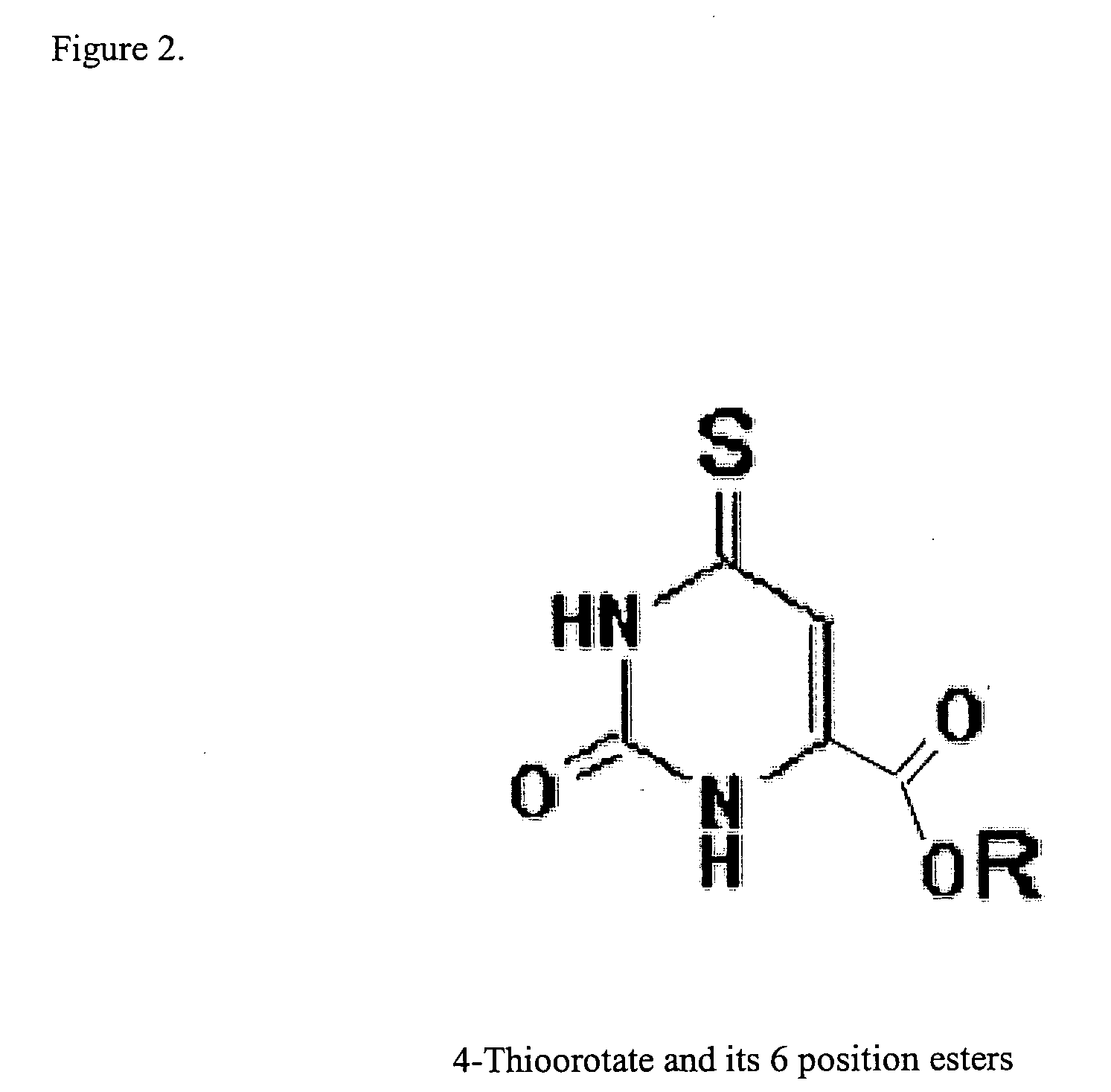Sulfonated precursors of thymidine for the treatment of epithelial hyperplasias
a technology of thymidine and precursors, which is applied in the field of photodynamic treatment of skin hyperplasia, can solve the problems of skin itching and pain, serious life-threatening melanoma, and many patients' distress and need treatment, and achieve the effect of facilitating subsequent penetration of the applied formulation
- Summary
- Abstract
- Description
- Claims
- Application Information
AI Technical Summary
Benefits of technology
Problems solved by technology
Method used
Image
Examples
example 1
[0045]A stage 1 bladder cancer patient is treated with 1 mg / mL 4-thioorotate intravenously for 24 hours. Following this 24 hour period, a cystoscopic probe is inserted in the urethra and into the bladder. By means of fibre optic UV-A light is shone onto the bladder lesion. The treatment is repeated twice a week and tumour regression monitored by cystoscopy.
example 2
[0046]A patient suffering from a BCC (basal cell carcinoma) lesion on the arm is treated in the following way. The lesion is cleaned, then pre-treated with acetone and DMSO for 10 min. Following this a gel consisting of 10 μM 4-thioorotate octyl ester, 40% DMSO in saline buffer and 2% microfibrillated cellulose is applied to the lesion. The lesion is dressed with surgical membrane and left untouched for 4 hours. After this period the dressing is removed and the lesion cleaned and dressed normally. 20 hours later the lesion is irradiated with a UV-A lamp with an emission of 350 nm, for a period of 10 minutes and a total energy of 10 kJ / m2 is applied. The irradiation is repeated for a period of one week, following which the whole treatment is repeated three times. Regression of the BCC is then assessed by biopsy and photography.
example 3
[0047]A patient suffering from psoriasis has the lesion directly covered with a solution of 50 μM 4-thioorotate in 20% DMSO, 10% PEG and 70% HEPES buffer. The lesion is dressed and the solution is re-applied to the lesion after four hours, and once more after that. In the following day, 24 hours after the last application, UV-A light is shone on the lesion with an emission of 350 nm, for a period of 20 min, and a total energy of 20 kJ / m2 is applied. The irradiation is repeated for 20 days and regression of the lesion monitored photographically.
PUM
| Property | Measurement | Unit |
|---|---|---|
| Nanoscale particle size | aaaaa | aaaaa |
| Nanoscale particle size | aaaaa | aaaaa |
| Biological properties | aaaaa | aaaaa |
Abstract
Description
Claims
Application Information
 Login to View More
Login to View More - R&D
- Intellectual Property
- Life Sciences
- Materials
- Tech Scout
- Unparalleled Data Quality
- Higher Quality Content
- 60% Fewer Hallucinations
Browse by: Latest US Patents, China's latest patents, Technical Efficacy Thesaurus, Application Domain, Technology Topic, Popular Technical Reports.
© 2025 PatSnap. All rights reserved.Legal|Privacy policy|Modern Slavery Act Transparency Statement|Sitemap|About US| Contact US: help@patsnap.com



